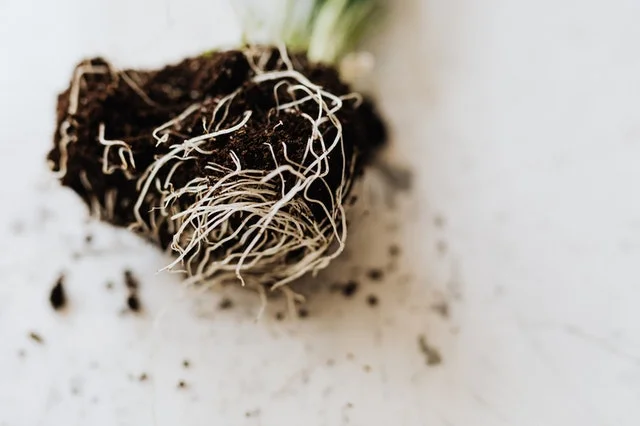Table of Contents
4 Signs of Root Rot in Snake Plants- and how to fix it!
The snake plant is a beautiful plant that many people like to keep as houseplants. However, there is a big enemy to the snake plant- root rot!
Signs of root rot might include mushy, brown, or wrinkled leaves or a soft stem.
The most common cause of root rot is too much water around the roots, caused by overwatering it, the pot being too small, or the soil not draining very well. However, it can also be caused by a pathogen.
To avoid root rot, you will need to make sure the environment is good, don’t overwater it, make sure it’s in a big pot of well-draining soil, and keep it away from other plants with root rot.
Signs of Root Rot in Snake Plants
Wrinkly Leaves
The first sign that your snake plant might be suffering from root rot is wrinkles on the leaves. When your plant’s roots have become rotten, they stop being able to absorb water and nutrients. As a result, neither water nor nutrients can reach the leaves.
And without water, the leaves will very quickly dry up. And as with your clothes, when they go from wet to dry, they will very often begin to wrinkle. The water in the cells gives them some strength and rigidity. When that isn’t there anymore, wrinkling is inevitable.
It’s not just snake plants. Most big leaves will wrinkle when they don’t have enough water.
Brown Leaves
Instead of, or sometimes as well as, being wrinkled, you may also find that the leaves have turned brown. With the absence of water, the leaf will quickly dry up as the remaining water in the cells will evaporate into the air, particularly when the room is too hot.
Since there is no longer any water to carry nutrients to the chloroplasts, there is no way for them to repair. The result of this is that their beautiful green colour goes away, and they can no longer absorb sunlight.
Mushy Leaves
But sometimes, the leaves won’t be dry, they’ll be quite the opposite- they’ll be all mushy.
Without water, the cells will not be able to repair themselves as they won’t have access to the nutrients that they need to be able to. To respond to the lack of water, they will try and hold onto as much water as possible.
When the cell walls break down, but the water inside them stays, the result is a mushy and horrible leaf.
Mushy leaves tend to occur when the temperature is low, so the water doesn’t evaporate easily.
Soft Stem
And the final sign of root rot in snake plants is a soft stem. The stem can get soft for similar reasons to the leaves.
With the cells unable to repair themselves due to a lack of being able to absorb nutrients from the soil, they will try and hold onto as much of the water as possible.
The cell walls break down, but the water stays there- instead of being evaporated, it just slowly oozes out.
As a result, the stem’s structure becomes floppy, sometimes unable to support all the leaves’ weight.
Causes of Root Rot in Snake Plants
You overwatering your snake plant
Likely, the most common reason why your Snake Plant has got root rot is because of you. They say too much of anything can make you sick, and with watering the snake plant, this is 110% true.
The mistake that a lot of snake plant owners make is they water it on a tight schedule. But the issue here is that often, you will end up watering it before it has been able to absorb all the water from it’s last watering.
As you add more and more water, the roots cannot absorb all of it, and being clogged with water, they are no longer able to absorb the nutrients.
The pot is too small
Another reason why your plant may have root rot is that the pot you’ve put it in is too small.
When the pot is large enough, any excess water can be absorbed into the soil, ready to be absorbed by the plant when it’s ready. But should your pot be too small, they will be more water to take up less space- not allowing any of the water to be stored in the soil.
All of the excess water will stagnate around a smaller point, occupied mainly by the roots.
The soil isn’t very good
As well as the pot, the trouble might also be the soil. As with most plants, the best type of soil to put the snake plant in would be one that’s well-draining.
In a well-draining soil, the excess water will drain itself away from the roots to the bottom of the pot. However, when the soil can do this, the water will remain close to where you poured it in-, usually by the roots.
It may also be because there are no holes at the bottom of the pot, so excess water has no way of escaping.
Pathogens
Sometimes, you will do everything you can to make sure everything is perfect. But even then, things can still go wrong.
There will be times when root rot is not caused by something you have (or haven’t done) but instead by a pathogen such as bacteria or virus. Some of these will be carried in the air, and others you may accidentally give to your plant when you water it.
Although far more common in the wild than in house plants, pathogens that cause root rot can still get to your snake plant
How to solve Root Rot in Snake Plants
Change the Environment
The first thing you should do if your plant is showing signs of root rot is changing the environment.
One of the most common issues is putting it somewhere too humid. Yes, in the wild, snake plants tend to live in reasonably moist places. But there, they have other plants to absorb some of the water. This is not the case in your house.
Too much water in the air will mean the plant will have too much to absorb.
You should also try and make sure the temperature is between 55-85F and it’s getting as much indirect sunlight as you can.
Water the Snake Plant Less
As you can imagine, if one of the biggest causes of root rot is overwatering, it may help to water it less often. Generally speaking, every 2-8 weeks will be fine- the specifics will depend on the environment and type of snake plant you have.
Instead of watering it on a schedule, check the soil. If the first 2 inches of soil are dry, you can water it. However, if that bit of soil is still damp, best to leave it for a few more days.
Wet soil means your snake plant still hasn’t absorbed all of the moisture you added last time.
Change the pot
You should also ensure the pottage of your snake plant is just right. Make sure the pot is big enough. With a big enough pot, excess water can be absorbed into the soil, where the plant can drink it when it needs to.
You should also try and get a better draining soil as this will ensure it will flow throughout the pot and not just hang about by the roots.
It may also be helpful to use a pot with some holes in the bottom.
Fight the Pathogens
If everything is set upright, it may be that your root rot has been caused by a pathogen. For this, it’s likely game over. However, that’s not to say there is no hope left.
The best solution to this problem would be to use some kind of fungal, viricide, or bactericide spray. Just make sure it’s weak, as one that’s too strong can end up damaging the plant.
It should also come as no surprise when I say you need to remove the plant from other plants. If the root rot has been caused by an airborne pathogen, nothing is stopping it from spreading to other plants.
It might not be Root Rot
Sometimes, the symptoms of root rot can also be the symptoms for totally different issues. Most plants can be susceptible to being eaten by pests. With snake plants, the most common types of pests are spider mites and mealybugs.
When these little critters eat at the plants, they become unable to repair their cells, and the results are often similar to when the plant has root rot. Particularly when they live underground and eat the roots.
Once you notice them, you will need to use a form of insecticide, or, in the case of mealybugs, you might just have to chop off the parts with them on. Their hard shells protect them from insecticide.
Conclusion
Root rot is one of the most common problems in Snake plants. As the name suggests, root rot is when the roots are rotten- usually caused by too much water but sometimes caused by pathogens.
Signs of root rot include wrinkly leaves, brown leaves, soft leaves, or a soft stem.
When you notice these signs, you may need to water it less, move it to a better pot, change the environment, or use some kind of anti-pathogen spray.
Photo by Karolina Grabowska from Pexels


